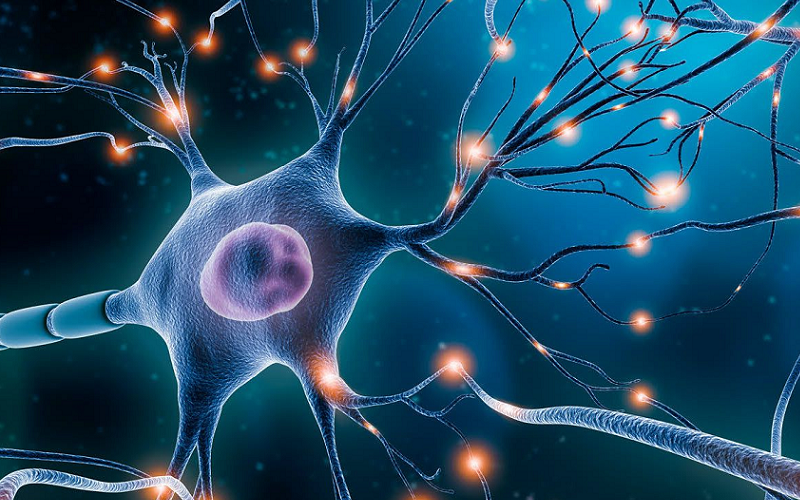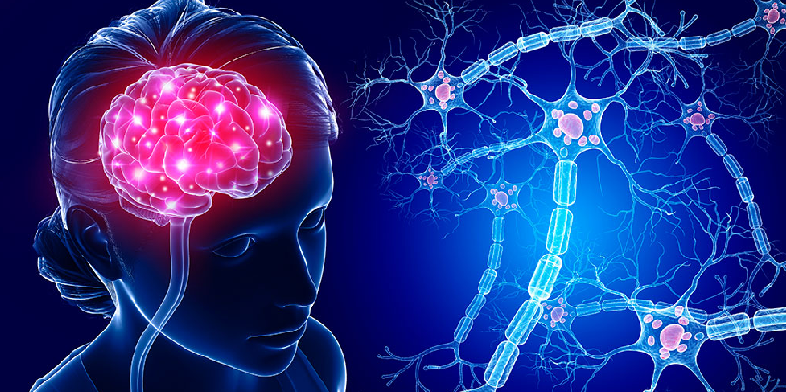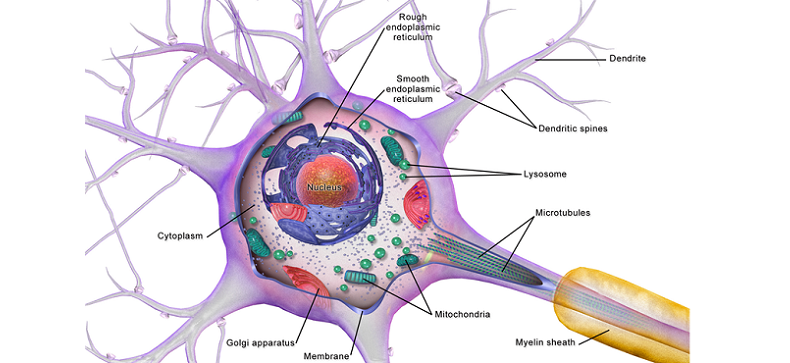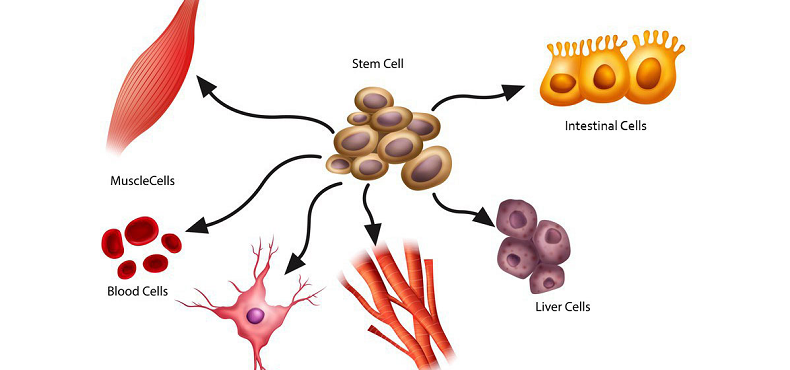
Neural stem cells, long thought to be the exclusive residents of the brain, are now turning up in places we never imagined possible. From the heart to the eyes, and even the olfactory bulb, the expanding map of these versatile cells is challenging our previous understanding and opening up revolutionary possibilities for the future of medicine.
Contents
- What Are Neural Stem Cells?
- Understanding the Brain: The Home of Neural Stem Cells
- The Unexpected Discovery: Neural Stem Cells Outside the Brain
- Exploring the New Territories: Where are These Stem Cells Found?
- Implications for Science and Medicine: Why Does Stem Cells Outside the Brain Matter?
- References
What Are Neural Stem Cells?
Neural stem cells are a specialized type of cell found predominantly in the brain and spinal cord. These cells possess the remarkable ability to self-renew, producing new cells, and to differentiate, becoming any type of cell found in the nervous system. This includes neurons, which transmit information throughout the body, as well as glial cells, which support and protect neurons.
Given their potential for self-renewal and differentiation, neural stem cells hold great promise for the treatment of a variety of neurological conditions. In fact, they are a hot topic in the fields of neuroscience and regenerative medicine.
Neural stem cells are crucial for maintaining the health of our nervous system. They are responsible for replacing damaged or lost neurons and glial cells, thereby playing a significant role in the natural healing process of the nervous system. Furthermore, the study of neural stem cells can lead to a better understanding of how the brain develops and functions, and how various neurological disorders occur.
The potential for therapeutic applications of these cells is also immense. From treating neurodegenerative diseases like Alzheimer’s and Parkinson’s to potentially repairing spinal cord injuries and reversing the effects of stroke, the power of neural stem cells is a beacon of hope in the field of regenerative medicine.
Understanding the Brain: The Home of Neural Stem Cells
To fully appreciate the significance of discovering neural stem cells in unexpected places, we must first understand their traditional home – the brain. For many years, the brain was considered the exclusive residence of these special cells.
The Neurogenic Niches: Main Locations of Neural Stem Cells in the Brain
Neural stem cells are typically found in specialized regions within the brain, often referred to as ‘neurogenic niches’. These niches provide the perfect environment for neural stem cells to thrive and function. Two primary neurogenic niches have been identified: the subventricular zone (SVZ) of the lateral ventricles and the subgranular zone (SGZ) of the dentate gyrus in the hippocampus [1].
The SVZ is the largest reservoir of neural stem cells in the adult brain. Here, these cells continuously generate new neurons that migrate to the olfactory bulb, contributing to our sense of smell. The SGZ, on the other hand, is a site where new neurons are generated throughout life and contribute to learning and memory processes.
Functions and Potential of Neural Stem Cells in the Brain
In these neurogenic niches, neural stem cells play an essential role in brain health and function. They continuously produce new neurons and glial cells, replenishing the brain’s cells and aiding in repair when injury or disease occurs.
From a therapeutic perspective, the potential of neural stem cells in the brain is enormous. By harnessing their regenerative capacity, scientists hope to develop treatments for a range of neurological conditions, such as Alzheimer’s disease, Parkinson’s disease, stroke, and traumatic brain injury. However, the brain’s inaccessibility and the complexity of manipulating these cells in situ pose significant challenges, leading scientists to wonder if there could be other sources of these potent cells [2].
The Brain’s Limitations: Why Scientists Look Elsewhere
While the brain is a rich source of neural stem cells, it isn’t the most accessible or convenient location for harvesting these cells for therapeutic purposes. The brain’s highly sensitive and intricate nature makes surgical procedures risky, and potential damage to healthy tissue is a real concern.
Moreover, the brain’s capacity to produce new cells is limited and decreases with age. While neural stem cells in the brain can self-renew and differentiate, they cannot do so indefinitely. This decline in regenerative capacity over time presents another significant challenge for developing stem-cell based therapies for neurodegenerative disorders, which often affect older individuals.
Consequently, these limitations spurred scientists to start looking beyond the brain, sparking a quest that led to the discovery of neural stem cells in the most unexpected places.

The Unexpected Discovery: Neural Stem Cells Outside the Brain
As we step beyond the confines of the brain, we find ourselves on the frontiers of neuroscience, where scientists have made surprising discoveries about neural stem cells. Their presence in unexpected places has created a ripple effect across the scientific community, challenging established beliefs and sparking vigorous debate.
Defining the Controversy: Can Neural Stem Cells Exist Outside the Brain?
The very notion of finding neural stem cells outside the brain was initially met with skepticism. After all, the term “neural” directly pertains to the nervous system, and the brain has long been considered the primary seat of neural stem cells. However, driven by the need to overcome the limitations associated with brain-sourced neural stem cells, researchers set off in search of these elusive cells in other parts of the body.
The Pioneering Research: First Hints of Neural Stem Cells in Non-Brain Regions
The first indications that neural stem cells might exist beyond the brain came from a series of ground-breaking studies conducted in the early 21st century. These studies showed that certain regions of the body, such as the olfactory bulb and the spinal cord, possessed cells that shared some characteristics with neural stem cells [3].
These findings suggested that the capacity for neural regeneration might not be exclusive to the brain, as was previously thought. However, these initial discoveries were not without controversy. Some scientists argued that these cells might not be “true” neural stem cells, but rather a different type of stem cell that could be coaxed into behaving like neural stem cells under certain conditions.
Solidifying the Evidence: Recent Studies Confirming the Presence
Despite the controversy, ongoing research has provided increasingly robust evidence for the presence of neural stem cells outside the brain. Studies have now confirmed that neural stem cells, or cells with remarkably similar properties, exist in several unexpected places, including the olfactory bulb, the retina, and even the heart [4].
The discovery of these cells outside the brain is not just a scientific curiosity—it opens up an entirely new avenue for stem cell research and therapy, making it a game-changer in the field of regenerative medicine.

Exploring the New Territories: Where are These Stem Cells Found?
Having embarked on this exploratory voyage beyond the brain, we now venture into the exciting new territories where neural stem cells have been discovered. Each of these locations provides a different perspective on the versatility and potential of these unique cells, expanding our understanding and painting a more diverse picture of neural stem cell biology.
The Nose: Olfactory Bulb and its Neural Stem Cells
The first stop on our exploration is the olfactory bulb, a part of our nervous system directly involved in the sense of smell. Remarkably, the olfactory bulb and the related olfactory epithelium contain cells that, like neural stem cells, can self-renew and differentiate into various cell types, including neurons. These cells’ location outside the brain proper makes them more accessible and potentially useful for therapeutic applications. Studies are ongoing to fully understand their potential and how best to harness it [5].
The Spinal Cord: Neural Stem Cells’ Role in Repair and Regeneration
Our journey continues to the spinal cord, another part of the central nervous system where neural stem cells have been identified. These cells, found in the ependymal layer lining the spinal cord, can potentially play a significant role in repairing spinal cord injuries. Ongoing research is focusing on how these cells can be stimulated to proliferate and differentiate in response to injury, with the hope of developing new treatments for spinal cord damage [6].
The Eyes: Retinal Stem Cells and Their Potential
The eye, specifically the retina, is another unexpected territory where stem cells with neural-like properties have been found. These retinal stem cells can generate all the different types of cells in the retina, opening up exciting possibilities for treating vision loss and degenerative diseases of the eye. While research is still in its early stages, the presence of these cells in the eye offers a ray of hope for those with vision problems.
The Heart: A Controversial Yet Fascinating Area of Research
One of the most surprising places where neural stem cells have been suggested to reside is the heart. This discovery is particularly fascinating because the heart, unlike the brain, spinal cord, and retina, is not part of the nervous system. However, it’s worth noting that this field of research is still highly controversial.
Critics argue that the cells found in the heart may not be true neural stem cells. Nevertheless, the possibility of their existence there has sparked intense research interest, with potentially transformative implications for regenerative medicine and our understanding of the body’s healing capacities [7].

Implications for Science and Medicine: Why Does Stem Cells Outside the Brain Matter?
The discovery of neural stem cells in regions outside the brain is not merely a scientific curiosity; it has profound implications for our understanding of human biology and the future of medicine.
The Potential for Repairing and Regenerating Damaged Tissues
Neural stem cells’ ability to self-renew and differentiate into various cell types opens up exciting possibilities for regenerative medicine. If we can understand how to control these cells, we could potentially stimulate the repair and regeneration of damaged tissues in the body. For instance, stimulating neural stem cells in the spinal cord could potentially enable repair after spinal cord injuries, while those in the retina could be coaxed to replace cells lost due to degenerative eye diseases [8].
Advancements in Understanding Neurological Diseases
Neural stem cells could also provide valuable insights into the causes of various neurological disorders. By studying these cells, we can gain a better understanding of how neurons develop and function, and how this process can go awry, leading to diseases such as Alzheimer’s or Parkinson’s. Furthermore, these cells could be used to model these diseases in the lab, enabling researchers to study disease progression and test potential treatments.
Prospects for Personalized Medicine: Stem Cell Therapies and Transplants
The discovery of neural stem cells outside the brain also opens up new avenues for personalized medicine. Researchers are exploring the possibility of using a patient’s own neural stem cells for treatment, thereby reducing the risk of immune rejection. This approach could potentially lead to more effective and safer stem cell therapies and transplants in the future.
References
[1] What Are Neural Stem Cells, and Why Are They Important?
[2] Identification of a Neural Stem Cell in the Adult Mammalian Central Nervous System
[3] Neural stem cells: developmental mechanisms and disease modeling
[4] Introduction to Neural Stem Cells
[5] Neural stem cells and neuro/gliogenesis in the central nervous system: understanding the structural and functional plasticity of the developing, mature, and diseased brain
[6] Brain’s Stem Cells “Eavesdrop” to Find Out When to Act
[7] Role of Endogenous Neural Stem Cells in Spinal Cord Injury and Repair
[8] Scientists find way to monitor progress of stem cells after transplantation into brain

